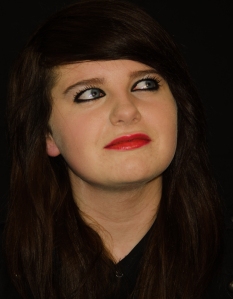Hello folks
It has been a while since I thought I had anything to say, however I’ve started the process of buying a New House through the Shared Ownership government scheme and as I’ve not been able to find anyone else who has written about there experiences I thought I would share mine.
So to set the scene, I have been in a council rented property for ten years, its a lovely area, but an old property that has tiny rooms and some quirks that aren’t that appealing as we grow older. My husband is 54 and I’m 53, both of us in permanent employment, though not in well paid positions.
Driving between our current home and places of employment construction started on a new housing estate the entrance displaying a huge sign saying Help to Buy scheme. I thought it worth investigating what these Help to Buy schemes were. Finding the Help to Buy NEYH site, I quickly decided the best of the schemes for us was Shared Ownership allowing us to buy a part of the property and rent the rest. ( You will notice I change between me/I/us/we a lot, I’m jointly buying but seem to do all the work on my own, its not poor writing its factual!)
Checking the available properties in the area I wanted, I found a great looking house on the development we drive past, 40% share was £64,000. Thinking that we should get a mortgage for that amount I sent an inquiry to the Registered Provider who was a national Housing Association-Home Group. I then completed the application form to Help to Buy NEYH with our information. This wasn’t as easy as I expected as I had to print the form out rather than complete online, then complete it by hand and post it off to them. In this day and age, I expect the government to keep up with technology – you got a great gateway for tax online! Within four days I received a call to talk through my information, and within ten days I received a pack of information. Very straightforward in the end.
The next step would seem logically to visit the show homes at the housing development and asking to see the property, this wasn’t easy at all. The properties aren’t owned by the builders they are owned by the Registered Provider, in effect they have been sold and therefore the builders are not interested in helping you at all. We were lucky and because they were built and complete we could peep through the windows of the downstairs to see the room sizes and shapes. I could see that the kitchen wasn’t going to have space for my American fridge-freezer and didn’t seem to have space for a dishwasher either – and when you think about it, the kitchen colours were already chosen the tiles in place, every kitchen we could see was identical. Now when you are buying a new build home, you would normally get a little say in what colour tiles etc are being used. Well not with Shared Ownership, I could own this home in five -ten years but I can’t choose anything as I’m jointly purchasing – well actually purchasing second hand -with/from a Registered Provider.
When Home Group contacted me to discuss the application they had all my information from the Help to Buy NEYH that was good as it gave them a basis to work from. I was soon to understand however that the advert for 40% share was not a choice but a starting place. After going through my income and outgoings I was TOLD I had to purchase 63% of the property. I was advised of the government criteria which wasn’t as simple as the key information they state. The following is copied and pasted from the government Help to Buy site:
The criteria is fairly broad and you should be eligible if:
- Your household earns less that £80,000 per year
- You are a first time buyer or used to own a home but cannot afford to buy one now
- Able to obtain a mortgage and/or savings for your share (deposits are typically 5-10% although may be higher in certain circumstances)
- Your income is sufficient to cover the mortgage (if applicable), rent and service charges
- Savings (or access to) £2,500 to cover the fees of buying your property plus the deposit.
- Have access to a minimum 5% deposit
That all sounds good, we earn a lot less than £80k, about £35k, we can’t afford a new one, we should be able to get a mortgage, we have some savings to pay about 5-10% deposit and a around the right amount for the fees. Yeah, we should be able to go ahead – oh wait that was all based on the purchase of 40%, they want me to buy 63%. A visit to my lovely bank the Halifax to ask about a mortgage next. The Halifax mortgage adviser was good, she listened, we went through our income and our potential outgoings, remember you have rent to pay and service charges as well as the other commitments you already have. So with 63% to purchase we require a mortgage of £90k and a 10% deposit of £10k, we can’t do that, we can’t get a mortgage of more than £70k and we only have a max of £6k for a deposit. Remember we thought we were buying a 40% share. So why the big difference? Well ‘eligibility’ and ‘affordability’ don’t go hand in hand.
The scheme has additional criteria, that you only find out about when the affordability calculator is run with your specific information. The calculator is provided by the HCA, you can access it yourself, though it is well hidden. HCA Affordability calculator section 6.1.3 on the link gives you access to the calculator, download it and you can enter your own figures. The calculator uses a debt to income ration of 45% as per guidance.
The HCA considers a 45% household debt to net income ratio as maximising their contribution to home ownership yet not over stretching in order to allow applicants to adapt to market changes in interest rates etc. This should cover mortgage costs, service charge and rent. A multiple of 4.5 x household income is also the maximum applicants can use to purchase their share. This is a cap and cannot be breached. Applicants should also be maximising their contribution, as a minimum the HCA requires applicants to be multiplying their income by 2.5x of their household income and 25% debt to net income ratio to be used.
All a bit much to follow? It was for me, but the essence is you need to be spending 45% of your net income on the house debt. So if your combined income into the bank is £1000 then you should be spending £450 of it on the mortgage/rent/service charge and living on the remaining £550 for bills, food, petrol to work, clothes, savings for household purchases, savings towards next car purchase…… what? so with a combined income of £2000 that is £900 on the house and £1100 on everything else. Have I got this right, is this normal, this is where I started looking for other peoples experiences. You see I live in a council house and the rent is low, just as well as I started off here as a non working mum. Yes I can now afford to move on, and agree I should, but even though I have high bills here because of the damp and old property I couldn’t see how giving 45% of my money to live in a house was going to work for me. Plus at our ages we could only get a mortgage for 12 years not the average 25 years that most people get.
With this in mind I wanted answers if I was going to spend so much money on home I wanted it right I wanted space for my appliances so I didn’t need to buy others and I wanted to be treat like a customer making a big purchase not a person complaining because I didn’t understand the process. I would have liked a face to face meeting over a coffee like the customers at the Show House got. So I found the email for the Head of Development at Home Group and sent him a scathing email. Surprisingly he sent me an email back immediately saying he would discuss it with the person I was dealing with. I did get my call back from the Home Group, but there was no compromise so I withdrew my interest in the property.
Thinking it wouldn’t work for me at all, I left it all alone for about two months, then while driving to a new pub to meet friends we saw another little housing development. Beautifully designed houses in a great location, I couldn’t help myself, I had to see if they had any on the Shared Ownership scheme. Checking the Help to Buy NEYH site, yes they did, and they had four of the ones I liked. I registered my interest and waited. The next day I got a call from an agent of Riverside the Registered Provider who owned the houses, they recommended using Metro Financial advisers to go through my affordability, they then send that information to Riverside, they work the calculator to the interests of the customer, supporting them to understand what is affordable, they have to stay within the HCA rules, but they use the flexibility available. The real beauty is that they also check with mortgage lenders as they go along to ensure that you can get the mortgage.
So to date, I have found the house, I have registered with the Help to Buy NEYH (that first application is valid for six months), I have given all my financial details to Metro Finance and I’m waiting for them to contact me tomorrow the 19/12/16 with how much of a share I have to purchase. It will be a great Christmas present if the share amount is no more than 40% which on this property would be £74k, that would be a mortgage of £66k and the rest deposit. I am prepared to upset, I am prepared to send all the documents they require – I can gather them and send them over my Christmas break.
The house itself will be handed over to Riverside at the end of January and that is when they want a non refundable reservation fee. I don’t know if they give any options in the layout of the kitchen to allow space for the fridge freezer or the dishwasher. I don’t know if there will be any colour choices. What I do know is that I feel from the telephone conversations that they are treating me as a valued customer.
I will keep this blog going to give you my experiences as they happen, if I’d known how complex it all was I would have started it the day I contacted Home Group.
I did in the midst of my angst write to my Member of Parliament, I’m still awaiting there response. My friends often say don’t get on the wrong side of Dee she will make sure everyone hears about it, but we all have a voice. There are more dire situations out in the world than my little rants. But silence is never the answer.













